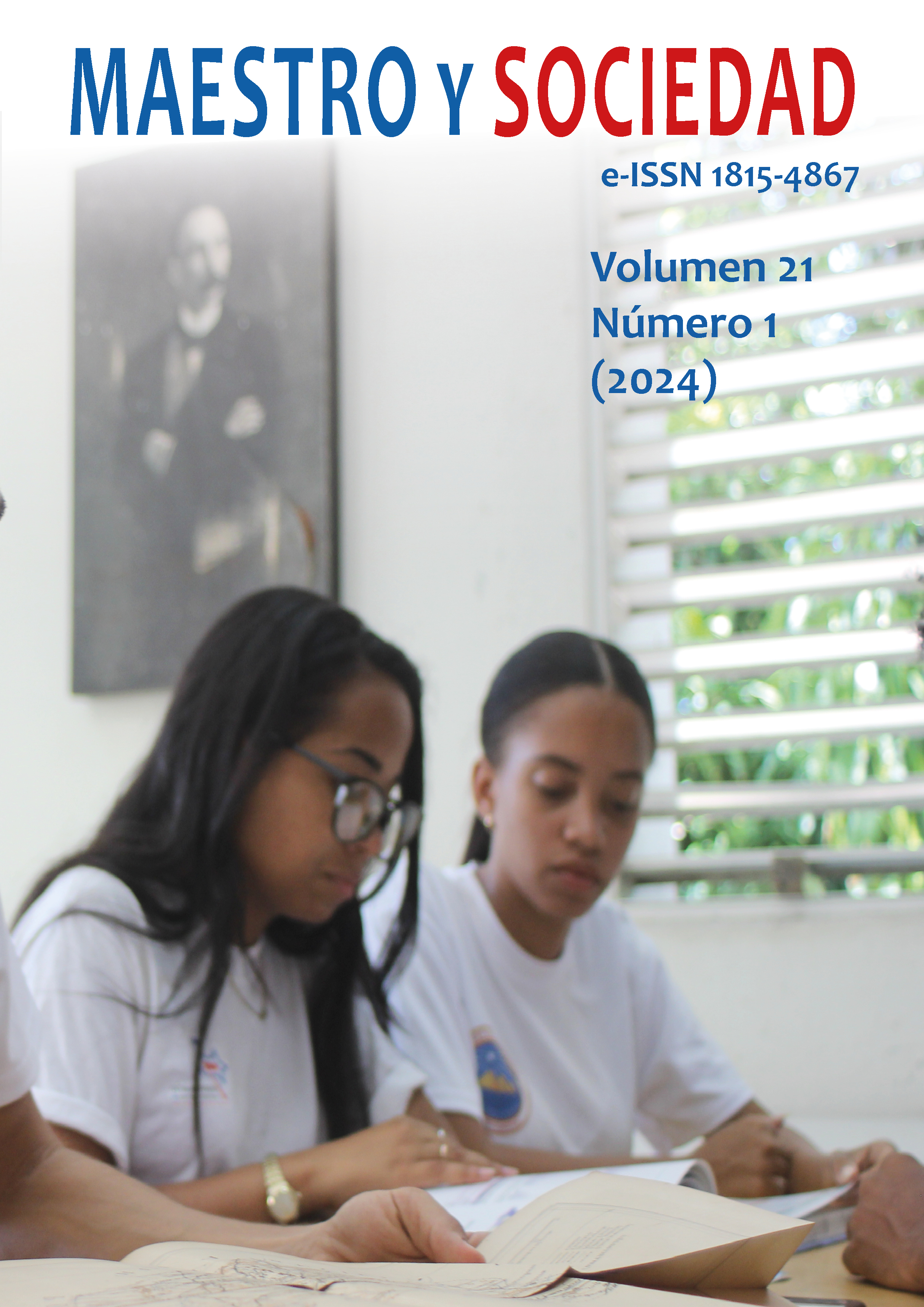Teaching Mathematics: didactic and technological trends in Education 4.0
Keywords:
teaching and learning of mathematics, didactic trends, education 4.0, artificial intelligence, higher educationAbstract
Introduction: Technological development and advances in the didactics of mathematics have transformed the traditional way of teaching this subject. However, these resources are not yet widely used in higher education to achieve greater effectiveness in student learning. Objective: The objective of this study is to present the main international trends in the teaching of mathematics and the use of technology in higher education. Materials and Methods: To achieve this objective, an exploration of the impact of Education 4.0 on the teaching of mathematics was conducted. Academic research, publications, conferences, expert opinions, and educational practices were used as sources of information. Results: As a result of this exploration, the most prominent trends in the didactics of mathematics and the application of technology at the international level were identified. Discussion: Education 4.0 allows teachers and students to make better use of existing didactic and technological advances, which can optimize the teaching and learning process in mathematics. Conclusions: It is vital for teachers to creatively use the didactic and technological resources presented in this work to improve the teaching of mathematics in higher education, enhancing meaningful and developmental learning for university students.
References
Alonso, I., Gorina, A., & Salgado, A. (2021). Sistematización de experiencias sobre la investigación en didáctica de la resolución de problemas matemáticos. MENDIVE, 19(1), 285-303. http://mendive.upr.edu.cu/index.php/MendiveUPR/article/view/2129
Alonso, I., Gorina, A., Iglesias, N., & Álvarez, J. (2018). Pautas para implementar la enseñanza de la Matemática a través de la resolución de problemas. Maestro y Sociedad, 15(Especial 3), 66-81. https://maestroysociedad.uo.edu.cu/index.php/MyS/article/download/3610/3166
Bedoya, D. R. (2022). Recursos digitales y tecnológicos en la educación 4.0 técnica y tecnológica. Aula Virtual, 3(8), 235-246. https://aulavirtual.web.ve/revista/ojs/index.php/aulavirtual/article/download/193/422
Crompton, H., & Burke, D. (2023). Artificial intelligence in higher education: the state of the field. Int J Educ Technol High Educ, 20(22). https://doi.org/10.1186/s41239-023-00392-8
Gibert, R. del P., & Gorina, A. (2023). Ecosistemas Digitales de Aprendizaje: una Alternativa para el Aprendizaje del Cálculo Diferencial e Integral. Universidad Y Sociedad, 15(4), 30-44. https://rus.ucf.edu.cu/index.php/rus/article/view/3950
Gibert, R. del P., Gorina, A., Reyes, N. C., Tapia, E. V., & Siza, S. F. (2023). Educación 4.0: Enfoque innovador apoyado en la IA para la ES. Universidad Y Sociedad, 15(6), 60-74. https://rus.ucf.edu.cu/index.php/rus/article/view/4122
González-Pérez, L. I., & Ramírez-Montoya, M. S. (2022). Components of Education 4.0 in 21st century skills frameworks: systematic review. Sustainability, 14(3), 1493. https://www.mdpi.com/2071-1050/14/3/1493/pdf
Gorina, A., Alonso, I., & Salgado, A. (2017). Visualización de información y de conocimiento en la formación universitaria. Un acercamiento desde la Pedagogía. Conrado, 13(59), 7-15. http://eprints.rclis.org/33108/1/513-Texto%20del%20art%C3%ADculo-1176-3-10-20170919.pdf
Holmes, W., Bialik, M., & Fadel, C. (2023). Artificial intelligence in education. In: Data ethics: building trust: how digital technologies can serve humanity (pp. 621-653). Globethics Publications. https://doi.org/10.58863/20.500.12424/4276068
Iglesias, N., Alonso, I., & Gorina, A. (2019). La interdisciplinariedad en la enseñanza-aprendizaje del cálculo diferencial e integral. Un instrumento didáctico para su concreción. Magazine de la Ciencia, 4(1), 115-130. https://revistas.utb.edu.ec/index.php/magazine/article/view/640/486
Khoo, N. A. K. A. F., Ishak, N. A. H. N., Osman, S., Ismail, N., & Kurniati, D. (2022). Computational thinking in mathematics education: A systematic review. AIP Publishing. https://doi.org/10.1063/5.0102618
O’Dea, X. C., & O’Dea, M. (2023). Is Artificial Intelligence Really the Next Big Thing in Learning and Teaching in Higher Education? A Conceptual Paper. Journal of University Teaching and Learning Practice, 20(5). http://dx.doi.org/10.53761/1.20.5.05
Udvaros, J., & Forman, N. (2023). Artificial Intelligence and Education 4.0. In INTED2023 Proceedings (pp. 6309-6317). IATED. https://doi.org/10.21125/inted.2023.1670
Van Vaerenbergh, S., & Pérez-Suay, A. (2022). A classification of artificial intelligence systems for mathematics education. In Mathematics Education in the Age of Artificial Intelligence: How Artificial Intelligence can Serve Mathematical Human Learning. Springer International Publishing. https://arxiv.org/pdf/2107.06015
Vera, F. (2023). Integración de la IA en la ES: Desafíos y oportunidades. Transformar, 4(1), 17-34. https://www.revistatransformar.cl/index.php/transformar/article/download/84/44
Published
How to Cite
Issue
Section
License
Copyright (c) 2024 Rosario del Pilar Gibert-Delgado, Gregory Edison Naranjo-Vaca, Segundo Fabián Siza-Moposita, Alexander Gorina-Sánchez

This work is licensed under a Creative Commons Attribution-NonCommercial-NoDerivatives 4.0 International License.
This journal provides immediate open access to its content, based on the principle that offering the public free access to research helps a greater global exchange of knowledge. Each author is responsible for the content of each of their articles.


























 Universidad de Oriente
Universidad de Oriente 